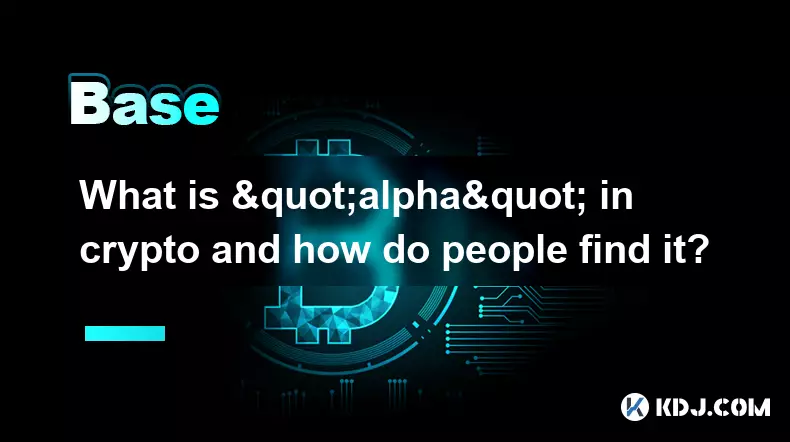-
 bitcoin
bitcoin $102877.190955 USD
1.88% -
 ethereum
ethereum $3430.435064 USD
4.52% -
 tether
tether $0.999264 USD
-0.05% -
 xrp
xrp $2.307310 USD
4.49% -
 bnb
bnb $987.740692 USD
3.82% -
 solana
solana $161.947760 USD
3.97% -
 usd-coin
usd-coin $0.999712 USD
-0.05% -
 tron
tron $0.292810 USD
2.93% -
 dogecoin
dogecoin $0.179738 USD
10.70% -
 cardano
cardano $0.580716 USD
8.75% -
 hyperliquid
hyperliquid $42.463448 USD
8.40% -
 chainlink
chainlink $15.763437 USD
7.05% -
 zcash
zcash $649.595636 USD
17.21% -
 bitcoin-cash
bitcoin-cash $511.610261 USD
7.19% -
 stellar
stellar $0.292537 USD
7.91%
What is a multi-signature (multisig) wallet and how does it enhance security?
Multi-signature wallets enhance crypto security by requiring multiple private keys to authorize transactions, reducing risks of theft and key loss.
Nov 07, 2025 at 07:59 pm

Understanding Multi-Signature Wallets in the Cryptocurrency Ecosystem
A multi-signature wallet, commonly referred to as a multisig wallet, is a digital wallet that requires more than one private key to authorize a transaction. Unlike standard cryptocurrency wallets that operate on a single-key mechanism—where one private key grants full control over funds—multisig wallets distribute signing authority across multiple parties or devices. This structure introduces an additional layer of security by ensuring no single entity can unilaterally move assets.
In typical implementations, a multisig wallet might be configured with a 2-of-3 setup, meaning three unique private keys are associated with the wallet, but only two are needed to approve any outgoing transaction. This configuration allows for redundancy and shared control while mitigating risks tied to key loss or unauthorized access. Such wallets are particularly valuable in organizational settings, joint accounts, or custodial services where trust must be distributed.
The underlying technology relies on blockchain scripting capabilities, supported by networks like Bitcoin and Ethereum, which allow complex spending conditions to be encoded directly into the wallet's address logic. When a transaction is initiated, it remains pending until the required number of signatures is collected, enforcing collaborative decision-making.
Enhanced Protection Against Theft and Unauthorized Access
- Even if one private key is compromised—due to malware, phishing, or device theft—the attacker cannot complete a transaction without the additional required signatures.
- Multisig setups reduce the impact of social engineering attacks since gaining access to one user’s credentials is insufficient to drain funds.
- By storing keys across geographically or technologically isolated environments (e.g., hardware wallet, mobile device, offline storage), users minimize exposure to single points of failure.
- Corporate treasuries use multisig to enforce internal approval workflows, preventing rogue employees from transferring large sums without oversight.
- The necessity of multiple approvals inherently slows down malicious actors, providing time for detection and intervention before irreversible transactions are broadcast.
Improved Resilience Against Key Loss
- In a 2-of-3 multisig arrangement, losing one key does not result in permanent loss of funds, as long as two remaining keys are accessible.
- Users can designate backup signers—trusted individuals or secure cold storage locations—that activate only when primary keys are unavailable.
- Recovery mechanisms become more flexible, allowing for planned succession or emergency access without relying on centralized recovery phrases.
- Institutional investors deploy multisig across jurisdictions to comply with regulatory requirements for asset protection and auditability.
- Decentralized autonomous organizations (DAOs) leverage multisig wallets to manage treasury funds, balancing accessibility with resistance to individual compromise.
Operational Security and Trust Minimization
- Service providers such as exchanges and custodians implement multisig to demonstrate non-custodial practices, reassuring users about fund safety.
- Smart contract platforms integrate multisig functionality natively, enabling developers to build applications with built-in authorization thresholds.
- High-net-worth individuals use multisig to separate personal, business, and investment holdings across distinct signing groups.
- Transaction monitoring tools can be linked to multisig systems, triggering alerts when signing requests originate from suspicious IPs or devices.
- Open-source multisig solutions allow full transparency into signing logic, reducing reliance on opaque third-party security claims.
Frequently Asked Questions
How does a multisig wallet differ from a regular crypto wallet?Multisig wallets require multiple private keys to sign a transaction, whereas regular wallets need only one. This difference fundamentally changes how control and responsibility are distributed, making multisig inherently more secure against both external attacks and internal errors.
Can multisig wallets be used for everyday transactions?While technically possible, multisig introduces complexity that makes it less convenient for routine spending. It is better suited for securing larger balances or institutional funds rather than daily microtransactions.
Are all blockchains compatible with multisig technology?No, not all blockchains support native multisig functionality. Bitcoin and Ethereum do, along with several other major networks, but some newer or specialized chains may lack robust scripting features necessary for implementing multi-signature schemes.
What happens if a signer becomes unresponsive or refuses to cooperate?In configurations like 2-of-3, the system tolerates one uncooperative or missing signer. However, if too many signers fail to participate, funds may become temporarily inaccessible until dispute resolution or recovery protocols are enacted, depending on prior arrangements.
Disclaimer:info@kdj.com
The information provided is not trading advice. kdj.com does not assume any responsibility for any investments made based on the information provided in this article. Cryptocurrencies are highly volatile and it is highly recommended that you invest with caution after thorough research!
If you believe that the content used on this website infringes your copyright, please contact us immediately (info@kdj.com) and we will delete it promptly.
- Ripple (XRP) in 2026: Hold or Fold? A Look at XRP's Future and Emerging DeFi Alternatives
- 2025-11-08 18:35:01
- Zcash ZEC Coin Price Explosion: From Privacy Niche to Center Stage
- 2025-11-08 18:55:01
- Berachain Price Prediction: Navigating the Honeycomb Hype in Crypto
- 2025-11-08 18:55:01
- Arthur Hayes, Gold, and Bitcoin: A Modern Monetary Trinity?
- 2025-11-08 19:15:01
- Shiba Inu's Next Move: Navigating a Shifting Market
- 2025-11-08 19:20:01
- Pakistan's Crypto Crossroads: Balancing Opportunity with Asset-Backed Realities
- 2025-11-08 19:20:01
Related knowledge

How does a crypto insurance protocol work?
Nov 08,2025 at 12:39am
Understanding Crypto Insurance Protocols1. A crypto insurance protocol operates by offering financial protection against losses incurred from digital ...

What is an "exploit" versus a "hack" in the context of smart contracts?
Nov 09,2025 at 12:40am
Understanding Exploits in Smart Contracts1. An exploit refers to the utilization of a known vulnerability within a smart contract’s code to gain unint...

What is a decentralized storage network and how does it compare to cloud services?
Nov 07,2025 at 11:59pm
Understanding Decentralized Storage Networks1. A decentralized storage network distributes data across a peer-to-peer infrastructure rather than relyi...

What is a factory contract and how is it used to deploy other contracts?
Nov 08,2025 at 04:20am
Understanding Factory Contracts in Blockchain Development1. A factory contract is a smart contract designed to create and deploy other smart contracts...

What is "alpha" in crypto and how do people find it?
Nov 08,2025 at 06:19pm
Understanding Alpha in the Cryptocurrency Space1. In the context of cryptocurrency, 'alpha' refers to valuable, non-public information or insights tha...

What is a "capital efficiency" in DeFi and how is it improved?
Nov 09,2025 at 01:40am
Understanding Capital Efficiency in DeFi1. Capital efficiency in decentralized finance (DeFi) refers to the ability of financial protocols and systems...

How does a crypto insurance protocol work?
Nov 08,2025 at 12:39am
Understanding Crypto Insurance Protocols1. A crypto insurance protocol operates by offering financial protection against losses incurred from digital ...

What is an "exploit" versus a "hack" in the context of smart contracts?
Nov 09,2025 at 12:40am
Understanding Exploits in Smart Contracts1. An exploit refers to the utilization of a known vulnerability within a smart contract’s code to gain unint...

What is a decentralized storage network and how does it compare to cloud services?
Nov 07,2025 at 11:59pm
Understanding Decentralized Storage Networks1. A decentralized storage network distributes data across a peer-to-peer infrastructure rather than relyi...

What is a factory contract and how is it used to deploy other contracts?
Nov 08,2025 at 04:20am
Understanding Factory Contracts in Blockchain Development1. A factory contract is a smart contract designed to create and deploy other smart contracts...

What is "alpha" in crypto and how do people find it?
Nov 08,2025 at 06:19pm
Understanding Alpha in the Cryptocurrency Space1. In the context of cryptocurrency, 'alpha' refers to valuable, non-public information or insights tha...

What is a "capital efficiency" in DeFi and how is it improved?
Nov 09,2025 at 01:40am
Understanding Capital Efficiency in DeFi1. Capital efficiency in decentralized finance (DeFi) refers to the ability of financial protocols and systems...
See all articles





















![The Graph Price Prediction [GRT Crypto Price News Today] The Graph Price Prediction [GRT Crypto Price News Today]](/uploads/2025/11/07/cryptocurrencies-news/videos/690d4df44fe69_image_500_375.webp)



















































